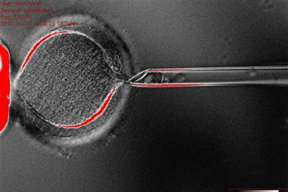 LONDON: Scientists have created a new type of human stem cell in the lab which they believe will be better at making replacement organs than existing stem cells.
LONDON: Scientists have created a new type of human stem cell in the lab which they believe will be better at making replacement organs than existing stem cells.
In theory stem cells can develop into any kind of cell, so they could be used to repair damaged organs or even build them from scratch. But most stem cells are not that flexible, researchers said.
The best ones are “pluripotent”, meaning they can turn into anything. Such cells have to be taken from embryos or made by reverting adult cells to their embryonic state, called induced pluripotent stem cells, ‘New Scientist’ reported.
But these pluripotent stem cells still carry genetic baggage from their previous existence.
“This [baggage] has been one of the confounding problems in this area,” said Austin Smith of the University of Cambridge, who led the team that developed the new cells.
The new cells have had their cellular memories wiped clean. Their genes have been cleansed of most methylation markers, so they behave more predictably and transform more consistently into other tissues.
The team hopes that this will make them a better building block for organs and tissues than existing embryonic stem cells.
“Nothing has been written or drawn on them to tell them what to do or become. These cells could be a better and more pristine starting point,” said Smith.
Called naive stem cells, these have long been known in mice and rats, but they have never been found in humans.
To make them, Smith and his colleagues mimicked the process that creates their mouse counterparts.
They gave human embryonic stem cells extra copies of two genes, Nanog and Klf2, which triggered the gene network needed to make the naive cells.
To confirm that the cells were naive stem cells, the team tracked which other genes were switched on.
Two genes called Klf4 and Tfcp2l1, which are active in mouse naive stem cells, were switched on in the human naive cells.
When the team examined human embryos at around 7 days old they found the genes were active, said Smith.
This suggests naive stem cells exist in natural human embryos. In mouse embryos, 10 to 20 naive stem cells appear just before the embryos implant into the uterus, Smith said, adding that the human naive cells may appear at the same time. -PTI






